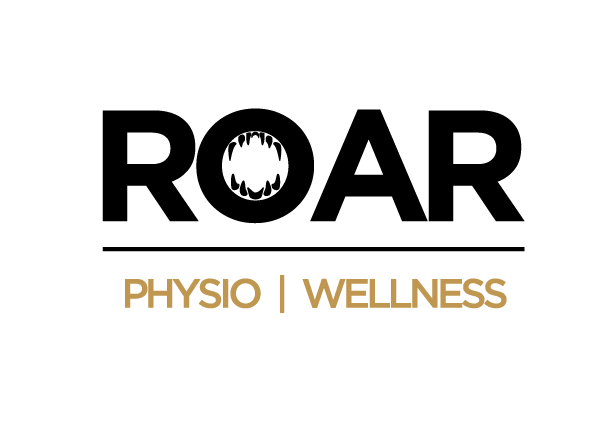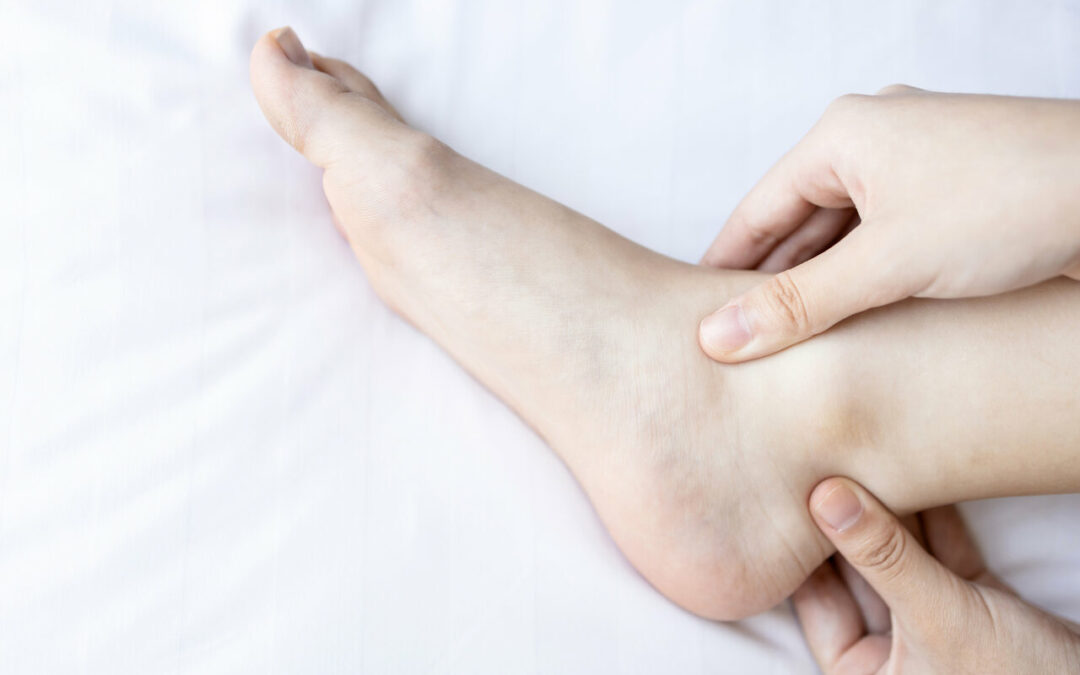Understanding Achilles Tendonitis
Achilles tendonitis is a common condition that affects the Achilles tendon, the band of tissue connecting the calf muscles to the heel bone. Understanding the causes and symptoms of this condition is essential for seeking effective treatment, such as physiotherapy.
Causes and Symptoms of Achilles Tendonitis
Achilles tendonitis typically results from overuse or repetitive stress on the tendon, often seen in athletes or individuals who engage in physical activities such as running or jumping. Other factors that can contribute to the development of Achilles tendonitis include:
- Sudden increase in physical activity
- Tight calf muscles
- Inadequate footwear
- Poor training techniques
- Age-related changes
The symptoms of Achilles tendonitis can vary in severity but commonly include:
| Symptom | Description |
|---|---|
| Pain | Usually located at the back of the heel and worsens with activity |
| Stiffness | Particularly noticeable in the morning or after periods of inactivity |
| Swelling | May occur along the tendon or at the heel |
| Tenderness | Typically felt when touching the affected area |
| Limited range of motion | Difficulty in flexing the foot or walking properly |
Recognizing these symptoms early can help in seeking prompt medical attention and starting appropriate treatment, such as physiotherapy.
Impact of Achilles Tendonitis on Daily Life
Achilles tendonitis can significantly affect one’s daily life, limiting mobility and causing discomfort. The pain and stiffness associated with this condition can interfere with routine activities, such as walking, climbing stairs, and participating in sports.
| Activity | Impact |
|---|---|
| Walking | Pain and limping can make walking difficult |
| Climbing stairs | Increased strain on the tendon can exacerbate symptoms |
| Exercising | Reduced ability to engage in physical activities |
| Standing for long periods | Can lead to increased pain and discomfort |
Living with Achilles tendonitis can be challenging, but seeking professional guidance from a physiotherapy clinic can provide relief and improve quality of life. Physiotherapy offers tailored treatment plans to address the symptoms and underlying causes of Achilles tendonitis, promoting recovery and preventing recurrence.
To learn more about how physiotherapy can aid in recovery, visit our sections on physiotherapy treatment and physiotherapy exercises.
Role of Physiotherapy in Achilles Tendonitis Treatment
How Physiotherapy Can Help Alleviate Achilles Tendonitis
Physiotherapy plays a crucial role in the treatment of Achilles tendonitis. By employing targeted techniques and exercises, we can help reduce pain, inflammation, and promote healing in the affected tendon. Our goal is to restore functionality and improve the patient’s quality of life.
- Pain Management: Techniques such as ice therapy, ultrasound, and electrical stimulation are used to reduce pain and swelling.
- Improving Flexibility: Stretching exercises are designed to increase the flexibility of the calf muscles and Achilles tendon.
- Strengthening Exercises: Specific exercises target the calf muscles to improve strength and support for the Achilles tendon.
- Manual Therapy: Hands-on techniques help to mobilize the soft tissues and joints, reducing stiffness and improving range of motion.
- Education: Teaching patients about proper footwear, activity modification, and ergonomics to prevent further strain on the tendon.
Benefits of Physiotherapy in Recovery
Physiotherapy not only helps alleviate symptoms but also offers several long-term benefits in the recovery process of Achilles tendonitis. By following a structured treatment plan, patients can experience significant improvements in their condition.
| Benefits of Physiotherapy | Description |
|---|---|
| Pain Reduction | Decreases pain levels through targeted interventions. |
| Improved Mobility | Enhances range of motion in the ankle and foot. |
| Strengthened Muscles | Builds muscle strength, particularly in the calf, to support the tendon. |
| Reduced Inflammation | Lowers inflammation through various therapeutic modalities. |
| Enhanced Flexibility | Increases flexibility in the Achilles tendon and surrounding muscles. |
| Preventive Education | Provides knowledge on preventing recurrence and managing daily activities. |
Our approach to physiotherapy for Achilles tendonitis is comprehensive and tailored to each individual’s needs. By working closely with a physiotherapist, patients receive a customized treatment plan that addresses their specific condition and goals. For more information on finding the right physiotherapy services, visit our page on physiotherapy near me.
Engaging in physiotherapy can significantly shorten the recovery period and reduce the likelihood of future injuries. By incorporating physiotherapy exercises into one’s routine, patients not only recover faster but also build resilience against potential recurrences. For additional information on managing other conditions, explore our articles on physiotherapy for plantar fasciitis and physiotherapy for knee pain.
Physiotherapy Techniques for Achilles Tendonitis
Physiotherapy plays a crucial role in the treatment of Achilles tendonitis. By incorporating specific techniques such as stretching, strengthening exercises, and manual therapy, we can effectively alleviate symptoms and promote recovery.
Stretching and Strengthening Exercises
Stretching and strengthening exercises are fundamental components of physiotherapy for Achilles tendonitis. These exercises aim to improve flexibility, enhance muscle strength, and reduce strain on the Achilles tendon.
Calf Stretch
- Stand facing a wall with one foot in front of the other.
- Keep the back leg straight and the front knee bent.
- Lean forward, pressing your hips toward the wall until you feel a stretch in the calf of the back leg.
- Hold for 30 seconds and repeat 3 times on each side.
Eccentric Heel Drops
- Stand on a step with the balls of your feet, allowing your heels to hang off the edge.
- Slowly lower your heels below the step level.
- Raise your heels back to the starting position.
- Perform 3 sets of 15 repetitions.
Toe-to-Heel Walk
- Walk forward on your toes for 10 steps.
- Walk backward on your heels for 10 steps.
- Repeat 2-3 times.
By regularly performing these exercises, we can help improve the flexibility and strength of the muscles and tendons in the lower leg, reducing the risk of future injuries. For more exercises, visit our comprehensive guide on physiotherapy exercises.
Manual Therapy Techniques
Manual therapy techniques are hands-on methods used by physiotherapists to alleviate pain, reduce inflammation, and promote healing of the Achilles tendon. These techniques include massage, mobilization, and manipulation.
Soft Tissue Massage
- Helps to relax tight muscles.
- Reduces muscle spasms.
- Improves blood circulation to the affected area.
Joint Mobilization
- Involves gentle movements to improve joint mobility.
- Reduces stiffness and pain in the ankle and foot.
Myofascial Release
- Targets the fascia, a connective tissue surrounding the muscles.
- Aims to release tension and improve tissue flexibility.
Manual therapy techniques are tailored to each individual’s needs, ensuring an effective and personalized approach to treatment. For more information on how manual therapy can benefit you, explore our article on physiotherapy treatment.
| Technique | Benefits |
|---|---|
| Soft Tissue Massage | Relaxes muscles, reduces spasms, improves circulation |
| Joint Mobilization | Enhances joint mobility, reduces stiffness and pain |
| Myofascial Release | Releases tension, improves tissue flexibility |
By combining stretching and strengthening exercises with manual therapy techniques, we can effectively manage Achilles tendonitis and promote a quicker recovery. Working closely with a professional physiotherapist ensures that we receive the most appropriate and effective treatment for our condition. For more details on finding a suitable physiotherapy clinic, visit physiotherapy near me.
Importance of Professional Guidance
Professional guidance plays a crucial role in effectively managing and treating Achilles tendonitis. Engaging with a physiotherapist ensures that individuals receive appropriate and tailored care.
Working with a Physiotherapist
When dealing with Achilles tendonitis, working with a qualified physiotherapist is essential. They possess the expertise to accurately diagnose the condition and develop an effective treatment plan. A physiotherapist will assess the severity of the tendonitis, identify contributing factors, and monitor progress throughout the recovery process.
Physiotherapists use a variety of techniques to alleviate pain and inflammation associated with Achilles tendonitis. These techniques may include manual therapy, ultrasound therapy, and specific physiotherapy exercises. By incorporating these methods, a physiotherapist can help reduce pain and improve mobility.
| Technique | Purpose |
|---|---|
| Manual Therapy | Reduce pain and improve mobility |
| Ultrasound Therapy | Decrease inflammation and promote healing |
| Specific Exercises | Strengthen muscles and improve flexibility |
Customized Treatment Plans for Achilles Tendonitis
A personalized treatment plan is vital for effective recovery from Achilles tendonitis. Physiotherapists create customized plans based on the individual’s specific needs, activity level, and the severity of the condition. This individualized approach ensures that each patient receives the most appropriate and effective care.
Customized treatment plans typically include a combination of stretching and strengthening exercises, manual therapy, and other modalities. These plans are designed to improve flexibility, build strength, and promote healing. Regular follow-up appointments with the physiotherapist allow for adjustments to the treatment plan as needed.
To further enhance recovery, physiotherapists may recommend lifestyle modifications and preventive measures. These may include advice on proper footwear, activity modifications, and techniques to avoid overuse injuries. For more information on how physiotherapy can help with various conditions, explore our articles on physiotherapy for back pain and physiotherapy for plantar fasciitis.
By working closely with a physiotherapist and following a customized treatment plan, individuals with Achilles tendonitis can achieve optimal recovery and reduce the risk of recurrence.
Preventing Achilles Tendonitis Recurrence
Preventing the recurrence of Achilles tendonitis is essential for maintaining long-term health and mobility. By incorporating specific lifestyle changes and ongoing physiotherapy practices, we can significantly reduce the risk of future injuries.
Lifestyle Changes to Prevent Future Injuries
Adopting certain lifestyle changes can play a pivotal role in preventing the recurrence of Achilles tendonitis. Here are some key strategies:
- Proper Footwear: Wearing shoes with adequate arch support and cushioning can help reduce strain on the Achilles tendon.
- Gradual Increase in Activity: Avoid sudden increases in physical activity levels. Gradually intensifying workouts allows the tendon to adapt.
- Balanced Diet: A diet rich in nutrients supports tendon health. Incorporate foods high in vitamins C and D, calcium, and omega-3 fatty acids.
- Regular Exercise: Engage in regular, low-impact exercises such as swimming or cycling to maintain overall fitness without overloading the tendon.
| Lifestyle Change | Benefit |
|---|---|
| Proper Footwear | Reduces strain on the tendon |
| Gradual Increase in Activity | Prevents overuse injuries |
| Balanced Diet | Supports tendon health |
| Regular Exercise | Maintains overall fitness |
Incorporating Physiotherapy into Long-Term Wellness
Physiotherapy is not just a treatment but also a preventative measure. By integrating physiotherapy techniques into our long-term wellness routine, we can keep Achilles tendonitis at bay.
- Stretching and Strengthening: Regularly performing physiotherapy exercises tailored for the Achilles tendon can enhance flexibility and strength.
- Manual Therapy: Techniques such as massage and soft tissue mobilization can improve blood flow and reduce tension in the tendon.
- Education and Advice: Working with a physiotherapist provides personalized advice on activity modifications and injury prevention strategies. Explore more about working with a physiotherapist.
Incorporating these practices into our daily lives can help us maintain tendon health and prevent future injuries. For more information on related physiotherapy topics, check out our articles on physiotherapy for sports injuries, physiotherapy for plantar fasciitis, and physiotherapy for knee pain.
By making informed lifestyle choices and utilizing the benefits of physiotherapy, we can effectively manage and prevent the recurrence of Achilles tendonitis.

